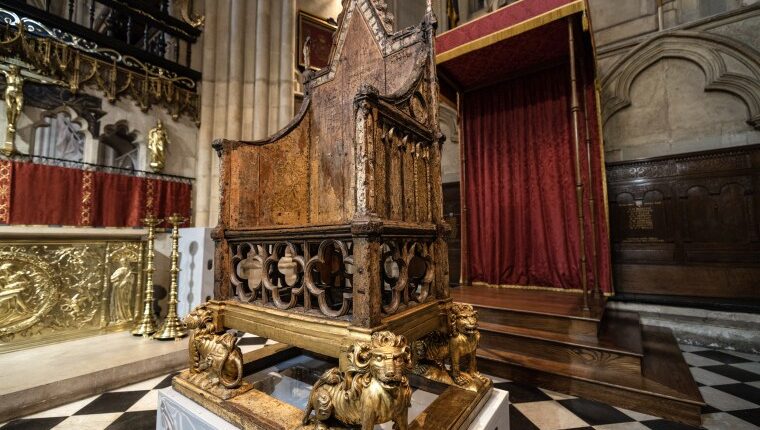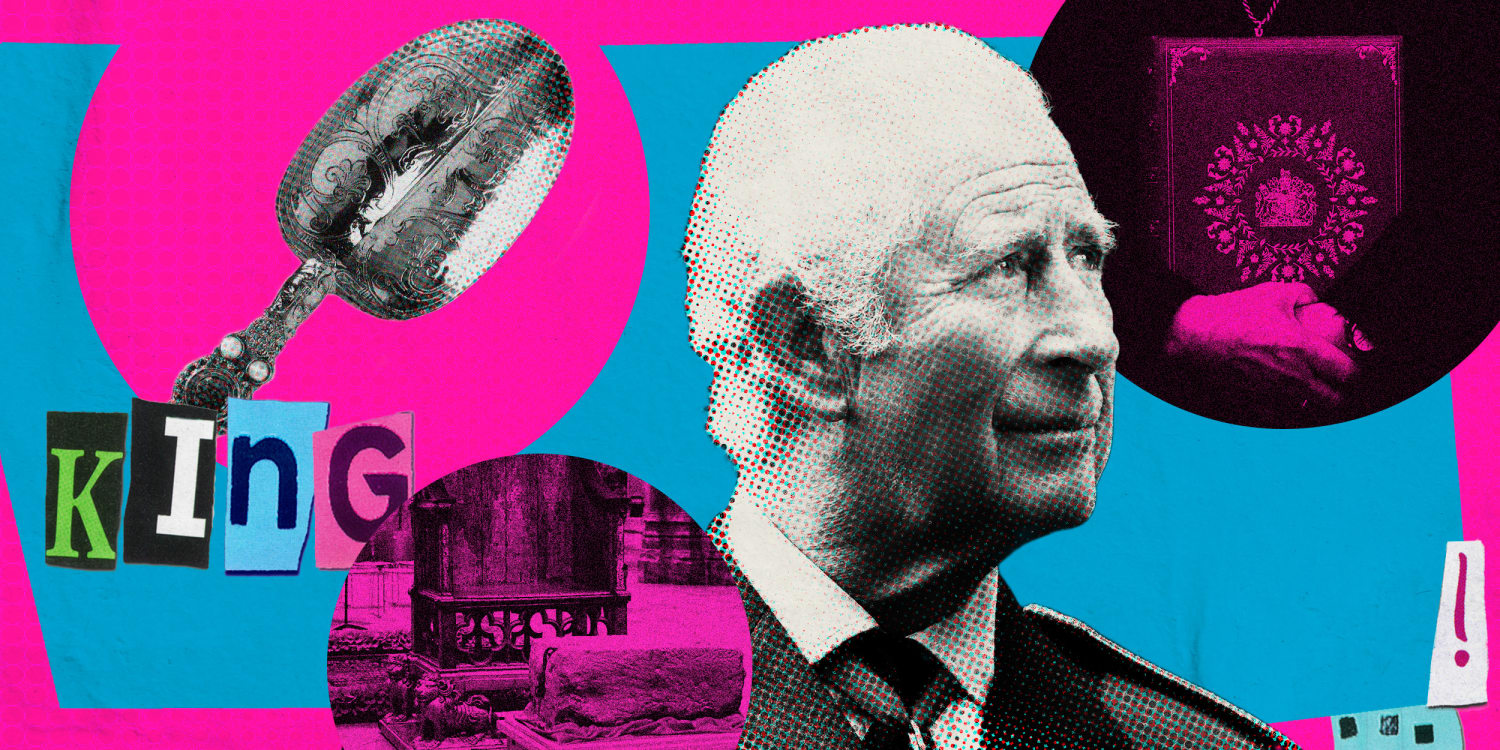LONDON — The ritual of crowning a new king or queen is more than 1,000 years old. And each of the objects used has its own importance and symbolism in sealing a bond among the monarch, the people, the church and God.
Here’s a guide to what the main items used in King Charles III’s coronation on Saturday mean:
Coronation chair
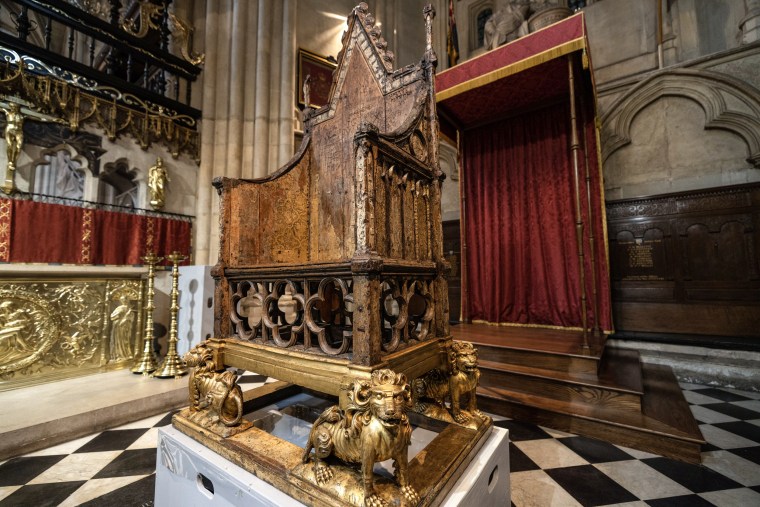
Also known as the St. Edward’s Chair or King Edward’s Chair, this simple seat has played a role in coronations for 700 years. It has left Westminster Abbey twice: once in 1657 when Oliver Cromwell was installed as lord protector at Westminster Hall during England’s brief period as a republic, and during World War II when it was taken to Gloucester Cathedral in western England.
Over the years it has been damaged and scrawled upon by schoolboys from nearby Westminster School and by tourists, one of whom wrote: “P. Abbott slept in this chair 5-6 July 1800.”
It first featured in the coronation of Edward II in 1308, although there is some debate over whether he was actually crowned on it. Henry IV was, however, definitely crowned upon it in 1399.
Stone of Destiny
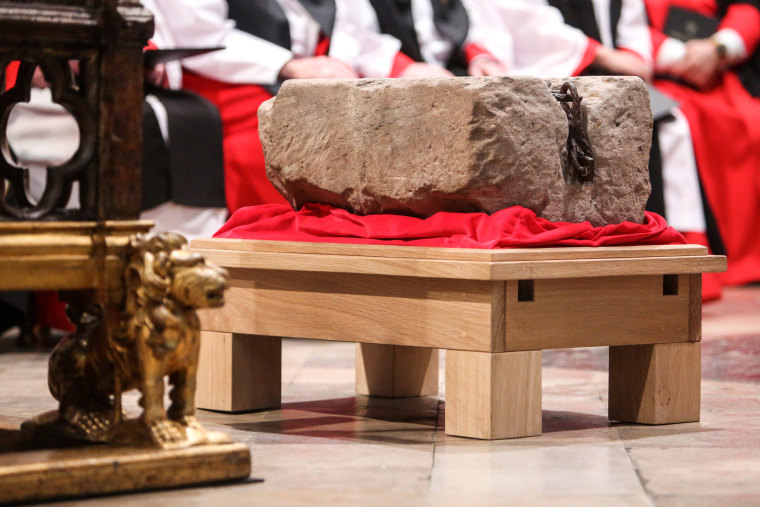
The coronation chair was built in around 1300 to house the Stone of Destiny, also known as the Stone of Scone. The stone, which sits beneath the chair, is a symbol of Scotland’s monarchy and was used for centuries to crown Scottish kings — until it was seized by Edward I, known as “Scottorum malleus” or “Hammer of the Scots.”
The somewhat unremarkable-looking 336-pound stone has ever since been used to crown monarchs of England and later Britain. It stood for centuries in Westminster Abbey, until four Scottish students stole it on Christmas Day 1950, prompting a huge manhunt. It appeared three months later on the altar of Arbroath Abbey in western Scotland, before it was put back under the coronation chair in 1952.
In 1996, then-Prime Minister John Major moved it permanently from Westminster to Edinburgh Castle where it still resides until it’s used for coronations.
The stone itself is surrounded by mystery. It is composed of pinkish sandstone and has a cross roughly marked into it. It has iron rings attached to either end but historians don’t agree on why.
The name Stone of Scone comes not from the baked treat but from Scone Palace — the historic crowning place of Scottish kings located just outside the city of Perth in central Scotland.
Coronation spoon
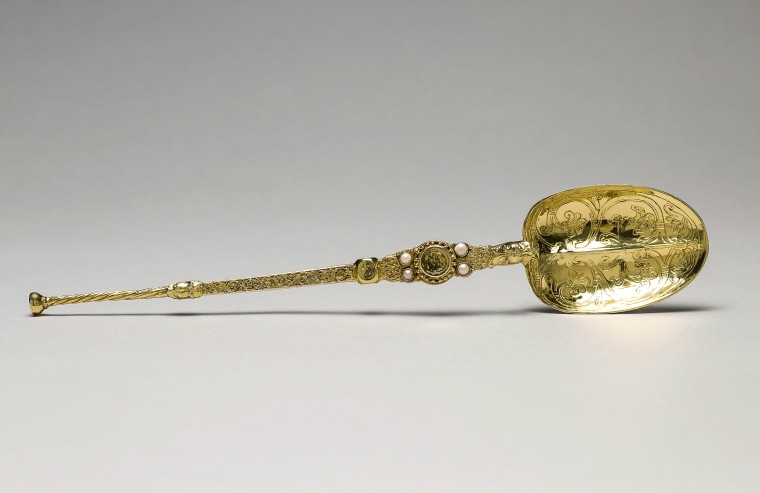
It may not look like much compared to the jewel-encrusted treasure on display elsewhere, but this spoon is the oldest and one of the most sacred items in the whole ceremony.
This silver gilt spoon is the only surviving piece of the original medieval crown jewels, first recorded to have been used at Westminster Abbey in 1349 when the bubonic plague known as the Black Death was spreading across the country. Even then it was referred to as an “antique forme.”
Historians disagree on its time of origin, some arguing it was made for Henry II (1154 to 1189) or Richard I (1189-1199).
The spoon has two indentations suggesting it was made for the archbishop to dip two fingers into holy oil to anoint the sovereign — its exact use since the coronation of Charles II in 1661.
Oliver Cromwell’s Parliament melted down the gold and sold the jewels of the royal regalia after the English Civil War, but the spoon was sold intact and the owner returned it to Charles II when the monarchy was re-established.
The ampulla
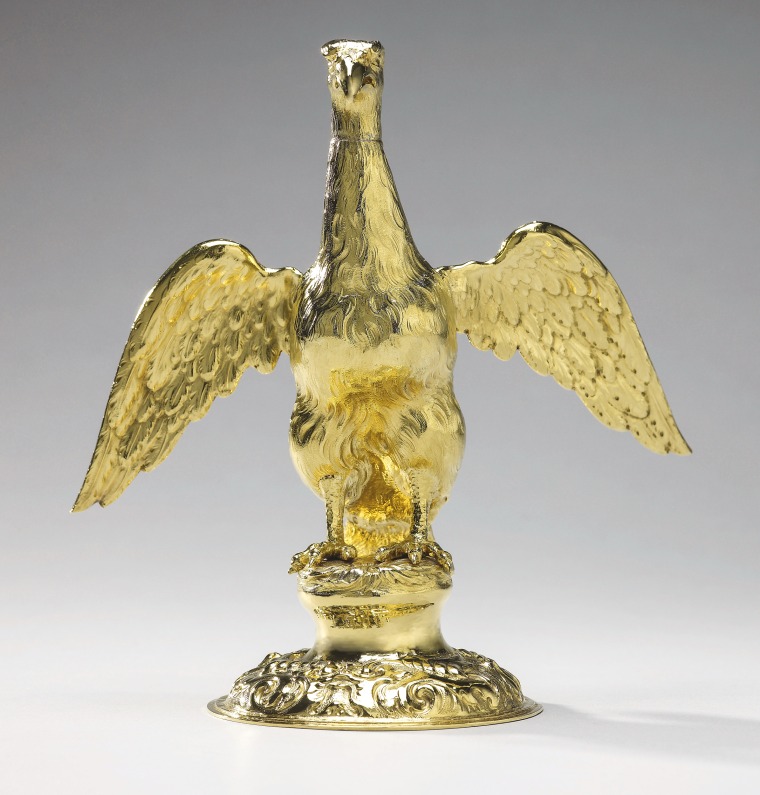
This golden eagle-shaped vessel contains the holy oil that will anoint the king and queen. It is based on a 14th-century legend in which the Virgin Mary appeared before St. Thomas Becket and offered him a golden eagle and a vial of oil to anoint future kings of England.
Becket served as Archbishop of Canterbury in the 12th century and was venerated as a saint after he was killed by supporters of Henry II.
Like many other coronation items, it was created for the coronation of Charles II in 1661, when the monarchy was restored following the rule of Cromwell and his Parliament.
The ampulla’s head is removable for refilling the flask, and there is a hole in the beak that is used to pour oil into the spoon. The anointing is the most sacred part of the coronation ceremony. The archbishop of Canterbury will mark the head, breast and hands of the sovereign with the holy oil in a ritual that is inspired by the story of King Solomon in the Old Testament.
Coronation oil
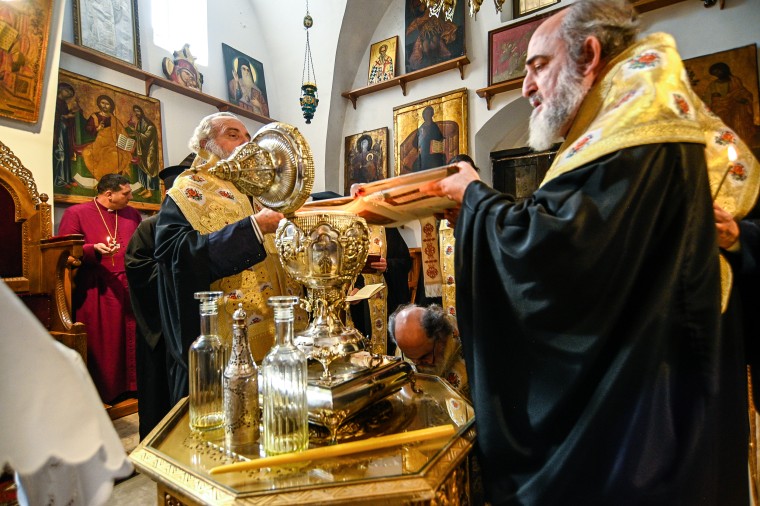
The coronation oil was created using olives harvested from two groves from monasteries on the Mount of Olives — a mountain ridge on the eastern borders of Jerusalem’s Old City.
This site has great significance to Christians: The Bible says Jesus prayed on the day before his crucifixion. The olives were picked from groves at the Monastery of Mary Magdalene and the Monastery of the Ascension and pressed into oil just outside Bethlehem, believed by Christians to be the birthplace of Jesus.
The palace has said the oil is perfumed with sesame, rose, jasmine, cinnamon, neroli (oil from an orange tree), benzoin (balsamic tree bark resin), amber and orange blossom.
The oil was declared holy in a special ceremony March 3 at the Church of the Holy Sepulchre in Jerusalem — a sacred church standing on the site where Christians believe Jesus was crucified.
For the first time in a coronation, the sacred oil used to anoint the king and queen will be not just vegetarian, but also vegan.
Nobody intends to drink it, but the oil has traditionally included ambergris, a rare and highly expensive waxy slurry found in the intestines of sperm whales, that is used in luxury perfumes as a way to make fragrances last. It’s illegal to trade ambergris in the United States., but not in the U.K. — nevertheless, the coronation will be without the substance also known as “whale vomit.”
Stone of Destiny

The coronation chair was built in around 1300 to house the Stone of Destiny, also known as the Stone of Scone. The stone, which sits beneath the chair, is a symbol of Scotland’s monarchy and was used for centuries to crown Scottish kings — until it was seized by Edward I, known as “Scottorum malleus” or “Hammer of the Scots.”
The somewhat unremarkable-looking 336-pound stone has ever since been used to crown monarchs of England and later Britain. It stood for centuries in Westminster Abbey, until four Scottish students stole it on Christmas Day 1950, prompting a huge manhunt. It appeared three months later on the altar of Arbroath Abbey in western Scotland, before it was put back under the coronation chair in 1952.
In 1996, then-Prime Minister John Major moved it permanently from Westminster to Edinburgh Castle where it still resides until it’s used for coronations.
The stone itself is surrounded by mystery. It is composed of pinkish sandstone and has a cross roughly marked into it. It has iron rings attached to either end but historians don’t agree on why.
The name Stone of Scone comes not from the baked treat but from Scone Palace — the historic crowning place of Scottish kings located just outside the city of Perth in central Scotland.
Coronation Bible
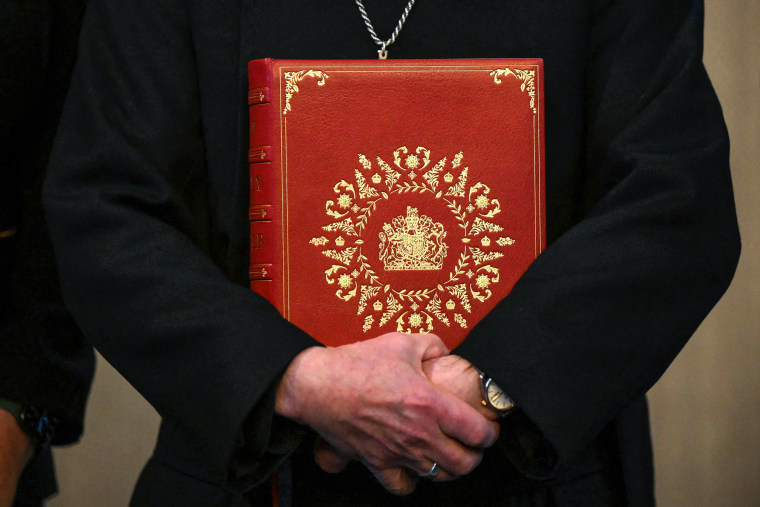
During the ceremony, the archbishop of Canterbury will present the king with a specially-commissioned King James Bible, on which he will place a hand as he recites his oath. New monarchs have been presented with a new Bible like this since the joint coronation of William III and Mary II in 1689.
Made by Oxford University Press, the book is handbound in leather and decorated with gold leaf. Four copies have been made, one of which will be given to Charles.
“The Bible which will be presented to His Majesty The King is a reminder that Scripture is not just at the heart of the responsibilities he undertakes at the Coronation, but at the heart of Christian life,” the archbishop of Canterbury, Justin Welby, said in a statement.
Source: | This article originally belongs to Nbcnews.com
